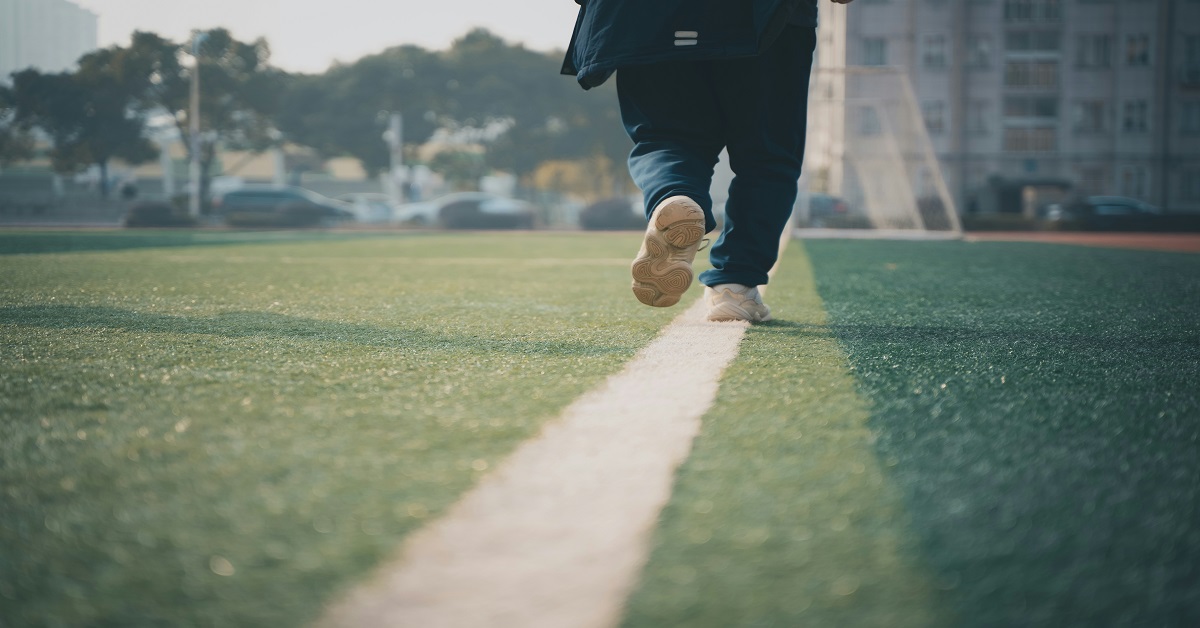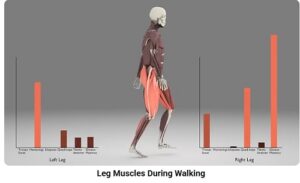De-stressing is a critical practice for individuals of all ages, including kids. Drawn-out routines, time-bound jobs, and constant social interaction can lead to a loss of vitality and momentum, management issues, and other limiting factors. To reduce negative bodily impacts, regular exercise in the form of walking or jogging is mandatory.
“Exercise is the deliberate and planned movement of the human frame, accompanied by breathlessness and undertaken for the sake of health and fitness…”
Hieronymus Mercurialis
Italian physicist
Effects on Human Anatomy
Video Link: https://www.youtube.com/watch?v=6ObNnCTV6MY
Feet & Ankles
The core body part of an individual is the feet, which assist in the process of movement. They act as a flexible shock absorber by curving inwards (pronation) and stiffening. When you walk or jog, the arch, heel, and ankle joints absorb the ground reaction force (GRF). This force propels the joints and muscles to rotate or move.
The ankle functions in two parts: Due to dorsiflexion, it flattens the foot, leading to stability and efficient energy transfer. Plantar flexion, on the other hand, pushes the ankle upwards, providing forward movement.

Source: ResearchGate
As the chart depicts, the highest pressure is on the medial/lateral forefoot (inner and outer front), while the lowest pressure is on the midfoot.
Lower Leg
The lower leg consists of two sections: The Fibula bone (back) and the Tibia bone (front). The bony structure connects at the ankle joint (tibiotalar joint), which comprises the talus bone. It helps to transfer weight from the leg to the foot, distributes pressure across the ankle joint, and enables foot movement.
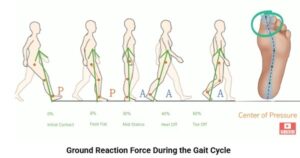
Video Link: https://www.youtube.com/watch?v=Y2RHvicAM2o
During dorsiflexion, the tibia rotates internally and stretches the calf muscles, while the fibula moves upward and rotates externally. The fibrous joint (distal tibiofibular joint) connects the two bones to form the ankle mortise. It helps to stabilize the ankle movement.
In plantar flexion, the tibia bone moves backward and rotates outward. This action causes forward movement. The fibula moves downward and rotates on the inside. The tibia transfers force from the knee to the ankle while the fibula stabilizes the ankle joint laterally.
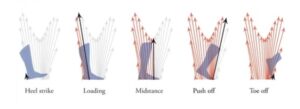
Source: YouTube
Knee & Thigh
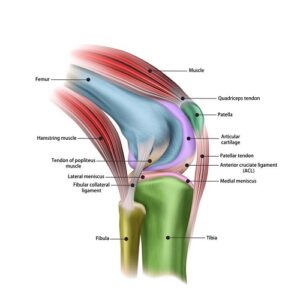
Source: Joionline
The upper end of the tibia bone connects with the knee, a critical joint for stable motion. The patella (knee cap) and femur (thigh bone) are also attached to it. The structure is called the knee joint.
A knee operates with two functions: Flexion (bending) and Extension (straightening). When the foot is pushed up towards the shin, dorsiflexion takes place. This allows the knee to flex while walking uphill or climbing stairs. Likewise, when the foot points downwards, plantar flexion occurs. The knee extends and drives the body in forward motion.
The thigh bone (femur) provides stability and movement. It transfers force from the hip to the knee. The upper end of the femur connects with the pelvis, the central area where the bones of the hips, buttocks, and pubic area are present. The bending and compression forces act on the thigh bone as weight transfers from one leg to another.
Hip
The hip joint is a crucial segment in the human body. It permits flexion, extension, abduction, adduction, and rotation of the leg. The joint provides stability to the upper body and transfers the weight to the lower limbs. During the initial phase, the pelvis and trunk move together. But in mid-stance, they change direction: The pelvis moves forward while the trunk rotates in the opposite direction.
Muscles, Cartilage, Ligaments, & Tendons
Besides the skeletal structure, humans possess a complex combination of soft tissues. These non-skeletal tissues help in mobility, blood circulation, shock absorption, and stability.
Below are some of the most important ones:
| S.No. | Name | Type | Location | Function |
1 | Quadricep | Muscles | Front of Thigh Bone | Help in knee extension and leg motion |
2 | Hamstring | Muscles | Back of Thigh Bone | Help in knee flexion and leg motion |
3 | Calf | Muscles | Back of Lower Leg | Stabilizes the ankle joint and supports plantar flexion |
4 | Hyaline | Cartilage | Joints | Provide smooth movement and absorb shock |
5 | Fibro | Cartilage | Knee, Jaw, Spine, etc. | Acts as a shock absorber and prevents bone-to-bone contact |
6 | Iliofermoral | Ligament | Front Side of Hip Joint | Stabilizes the hip and posture |
7 | Anterior Cruciate | Ligament | Inside the Knee Joint | Controls tibia movement and knee rotation |
8 | Deltoid | Ligament | Inner Side of the Ankle Joint | Absorbs shock and distributes body weight |
9 | Achilles | Tendon | Connects Calf Muscles to Heel Bone | Absorbs impact and provides forward motion |
| 10 | Quadriceps | Tendon | Connect Quadriceps Muscles to Kneecap | Stable knee extension and leg strength |
Effects on Body Functioning
“Walking or running is useful for physical and mental health. It strengthens the nerve and muscle cells, removes unwanted body fat, reduces stress, and improves the immune system. Toxins are also expelled from the body. Lastly, it helps in proper breathing.”
Source: ResearchGate
The Heart
Before you start a walking or jogging exercise plan, ensure that you don’t have a heart condition. According to research, rigorous training can lead to cardiac arrest. In teens, the ratio is 1:133,000 (men) and 1:769,000 (women). In older individuals, one in every 18,000 suffers the fate. Such cases have been associated with Atherosclerosis, an abnormality in which blood does not flow smoothly.
To improve your heart condition, follow a walk-only or walk/jog plan. You can start with a 5-10 minute warm-up session, followed by a walk/jog of the same duration, and then rest. Manage your plan, either daily or weekly. Increase the total time spent in physical exercise; it helps to develop a healthy heart.
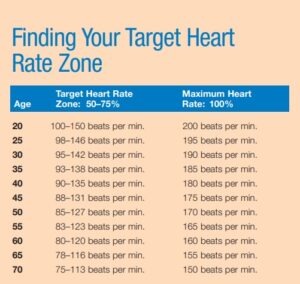
Source: Nursing and HealthCare Intl. Journal
You can also create your walk/jog program on the ‘target heart rate zone’ attribute. Aim for the ‘lower limit heart-beat value’ in the initial stages of the walking or jogging program. And increase it as you spend more time.
Walking Schedule
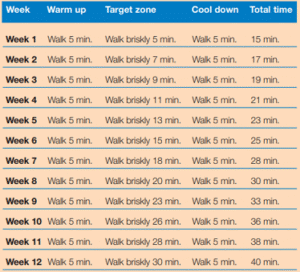
Source: Nhlbi.nih.gov
Jogging Schedule

Source: Nhlbi.nih.gov
The Lungs
Besides heartbeat measurement, the inhalation and exhalation of oxygen are also important attributes to assess. The maximal oxygen consumption or VO2max evaluates the body’s ability to consume oxygen. To estimate your VO2 levels, opt for a 12-minute/ 1-mile walk or a 1.5-mile walk/jog program. A high value of VO2max indicates optimum functioning of lungs, heart, and cells.
According to JKD Research, brisk walking and HIIT have a positive impact on the VO2max attribute. Sixty young adult women were divided into three groups: Brisk Walking, HIIT, and Control. The project’s duration was six weeks, with three days of exercise per week. The control group did not participate.
The VO2max values rose for the brisk walking and HIIT groups: 9.83 ± 3.93 and 8.84 ± 4.76, respectively. The control group saw a decline of -3.97 ± 4.02.
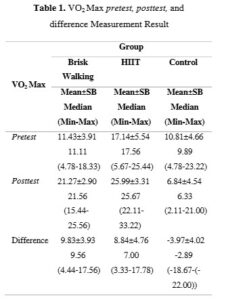
Source: JKD
The Brain
Regular aerobic exercise (walking/jogging) increases cerebral blood flow and oxygen transport to tissues. Neurotrophic and lactate growth are also enhanced, which aids in the development of learning and memory. (Network Scientific Journal)
Lactate is a molecule used by cells as an energy source when the supply of oxygen is limited. It is produced during glycolysis. Neurotrophic growth, on the other hand, is the survival and development of neurons. It is responsible for the proper functioning of the nervous system.
According to South Dakota State University’s research, aerobic exercises reduce symptoms of anxiety and depression and minimize addiction to different substances like alcohol and nicotine. Regular walking or jogging also improves impulse control.
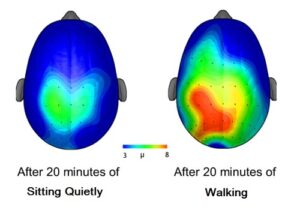
Increased Effect of Walking on the Sensorimotor Cortex
Source: Extension
Walking/Jogging | Facts, Personalities, & Apparel
Specifics
- According to the WHO recommendation, adults should briskly walk for 150 minutes per week (at a speed of 3 mph).
- Research indicates that 15 minutes of brisk walking daily can increase life expectancy by approximately 3 years. An additional 15 minutes of daily exercise reduces the death rate by 4%.
- Regular exercise produces endorphins, hormones that improve mood and self-esteem.
- It increases HDL (Good) cholesterol.
- A brisk walk reduces the risk of dementia, increases muscle strength, and protects against osteoporosis.
Famous Sports Personalities
- Sarah Baum (South African surfer)
- Cristiano Ronaldo (Portuguese footballer)
- Allyson Felix (American athlete)
- Alexander Tretyakov (Russian racer)
- Yang Jiayu (Chinese racewalker)
* These personalities prefer short or long-distance walks for body shaping and fitness.
Apparel
From running shoes to hats, each wearable item plays a crucial role in a daily workout routine. Individuals, whether athletes or fitness enthusiasts, prefer attire that offers comfort and durability. As the saying goes, “Sporting apparel should be snug, not a perfect fit!”
Running Shoes
A perfect walk or run requires soft landing, flexible movement, and a steady rhythm to ensure minimal strain on the body. And it starts with a good pair of running shoes. Below is a simple comparison for healthy individuals and those with foot pain.
Healthy Individuals | Foot-Pain Sufferers |
Soft, Breathable Uppers | Structured Uppers (Engineered, knit, or leather) |
Lightweight Construction | Light-to-Medium Weight Construction |
Stiff Heel Counter | Snug Heel Counter |
Comfortable Heel Collar | Snug Heel Collar |
Thin/Thick Socks | Thick Socks |
Spacious Toe Box | Spacious Toe Box |
| Gusseted/Non-Gusseted Tongue | Gusseted Tongue |
Best Running Shoes
Some of the most comfortable running shoes on the market are:
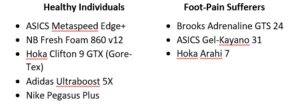
Dress
Along with a loose-fit, moisture-wicking T-shirt that helps remove sweat from the body and adds minimal weight, you can wear a soft-shell or hybrid water-resistant jacket. This combination supports a comfortable walk or jog, whether short or long distance.
You can opt for polyester, Merino wool, or CoolMax material socks, breathable or convertible pants, supportive sports bras, a sports watch, a running belt, a sun hat, and lightweight gloves.
End Note
Walking or jogging is essential for everyone, regardless of age, from children to adults and the elderly. It offers a wide range of benefits, including improved blood circulation, a reduced risk of chronic diseases, and stronger muscles and bones. An early morning or late evening walk or jog can improve your health significantly. So don’t wait! Modify your routine today!
“The sovereign invigorator of the body is exercise, and of all the exercises, walking is the best.”
Thomas Jefferson
ADDITIONAL VIDEO LINKS:
The 4 Stages of Walking: https://www.youtube.com/watch?v=6MEunPE_HAM
The Walk-Jog Method: https://www.youtube.com/watch?v=IzyNWr1ZJWU&t=123s
The Walk-Jog Process: https://www.youtube.com/watch?v=Oa2u894iLK8
How to Walk Properly? https://www.youtube.com/watch?v=k2TfeNnYawU
